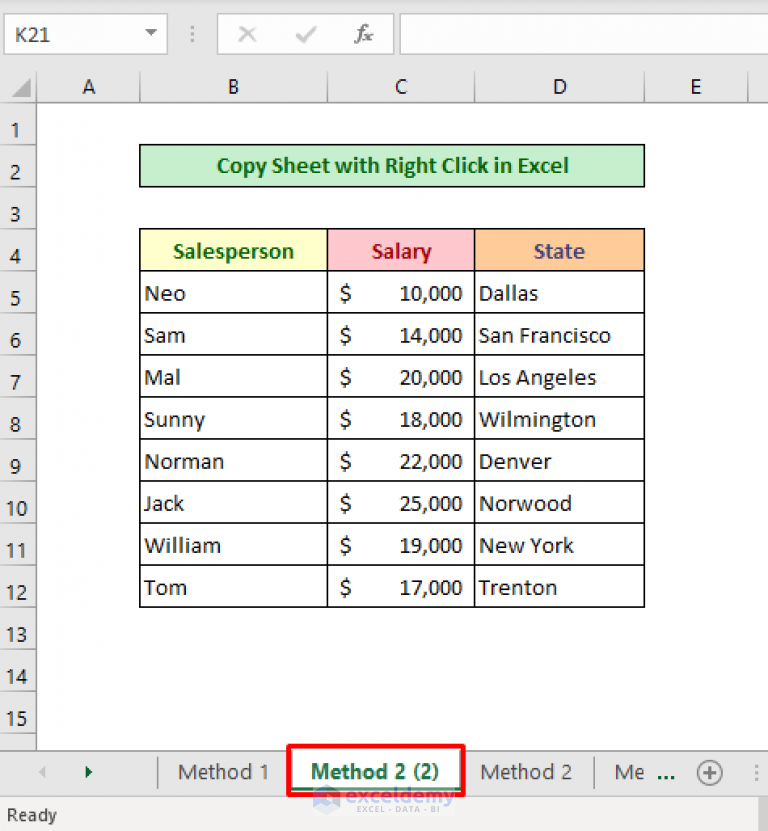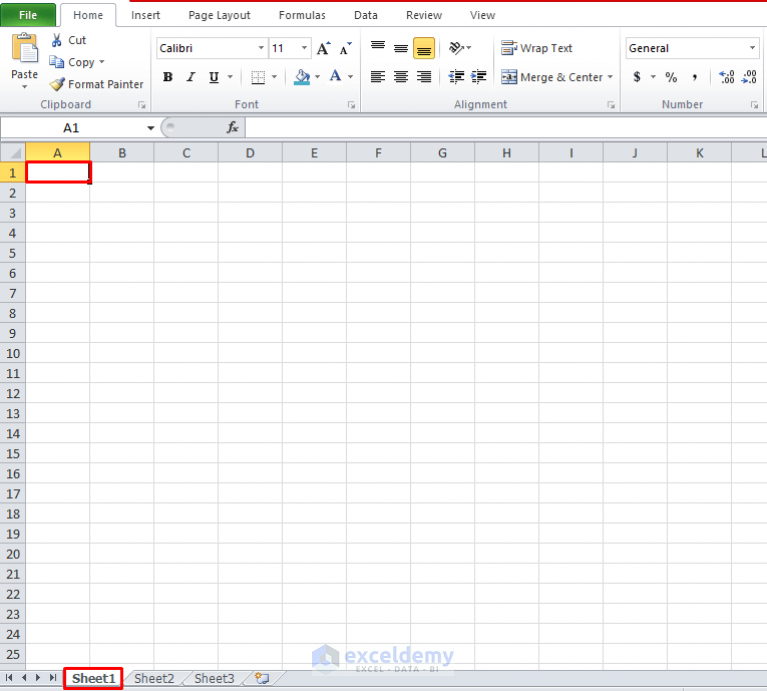Copy Excel Sheet with Formatting: Simple Guide

Welcome to our simple guide on how to copy an Excel sheet with formatting. Whether you're a student, a professional, or someone who works with data regularly, mastering this skill can significantly streamline your productivity. Excel, Microsoft's flagship spreadsheet software, is known for its versatility in data analysis, and understanding how to copy sheets while retaining all the hard work you've put into formatting can save you time and headaches. Let's dive into the straightforward steps to achieve this seamlessly.
Understanding Excel Sheet Formatting


Before we get into copying sheets, let’s briefly discuss what formatting in Excel encompasses:
- Cell Styles: These include font type, size, color, and bold/italic options.
- Number Formatting: Decides how your numbers appear (e.g., currency, percentages, dates).
- Cell Borders: Allows for lines or boxes around cells to separate or group data visually.
- Conditional Formatting: Rules that format cells based on the data they contain.
- Cell Alignment: How text is positioned within a cell (e.g., left, center, right).
Step-by-Step Guide to Copy Excel Sheet with Formatting

Follow these steps to copy an Excel sheet while keeping all formatting intact:
1. Select the Sheet to Copy


- Click on the sheet tab you want to copy.
- Right-click it for context menu options.
2. Copy the Sheet

- Right-click the selected sheet tab, then choose “Move or Copy…”
- In the “Move or Copy” dialog box, select the workbook where you want the sheet to go.
- Tick the box labeled “Create a copy.”
- Choose where in the workbook you want to insert the copy (e.g., “Before Sheet1”)
- Click “OK.”
3. Confirm Formatting


Ensure that all the formatting has been copied correctly by:
- Verifying cell styles, conditional formatting rules, and any visual elements like charts or comments.
- Checking for any hidden rows or columns that may have been copied as well.
Managing Data Integrity

When copying sheets with Excel, here are some points to consider:
- Data Links: If your original sheet has links to external data, make sure the copied sheet maintains these links.
- Formulas: Check if formulas reference cell ranges outside the copied sheet. These need adjustments to maintain data integrity.
- Named Ranges: Named ranges might need to be redefined in the copied sheet.
🛈 Note: When copying sheets between workbooks, ensure the source and destination workbooks have compatible formats. For instance, Excel 2013 might not fully support certain formatting options of Excel 2019.
Advanced Tips for Copying Sheets

Here are some advanced tips to ensure a smooth process:
- VBA Macros: If you’re familiar with VBA, you can automate sheet copying. Here’s a basic VBA code to copy the active sheet:
Sub CopySheetWithFormatting() Sheets(ActiveSheet.Name).Copy After:=Sheets(Sheets.Count) End Sub - External References: If sheets are linked to external sources, make sure these references are updated or adjusted after copying.
- Table Handling: When copying sheets with Excel tables, ensure that tables are not duplicated or overlapping.
Organizing Copied Sheets

| Action | Description |
|---|---|
| Rename the Sheet | Right-click on the new sheet tab and choose “Rename,” then give it an appropriate name. |
| Color Coding | Right-click on the sheet tab and choose “Tab Color” to color-code it for easier reference. |
| Reorder Sheets | Left-click and drag the sheet tab to where you want it positioned. |
| Group Sheets | Hold down the Shift or Ctrl key to select multiple sheets and perform actions on them simultaneously. |

💡 Note: Excel's worksheet limitation is based on the version. Ensure your Excel version supports the number of sheets you plan to copy.
Common Issues and Solutions

Here are a few common problems you might encounter:
- Formatting Mismatch: If you find formatting differences, double-check the version compatibility between your source and destination workbooks.
- External Links Broken: Refresh data connections or use Excel’s “Find and Replace” to update broken links.
- Data Overflow: Make sure there is enough space in the destination workbook for all data and formatting.
Wrapping Up

In conclusion, learning how to copy Excel sheets with formatting is a valuable skill that can boost your productivity. This guide has covered everything from understanding Excel’s formatting capabilities to the step-by-step process of copying sheets, managing data integrity, and addressing potential issues. With these insights, you can efficiently replicate your work across sheets or workbooks, maintaining consistency and accuracy in your data presentation.
Can I copy multiple sheets at once?

+
Yes, you can copy multiple sheets by holding down the Shift or Ctrl key to select several sheets before initiating the copy process. However, ensure the destination workbook can accommodate all the sheets.
What if I want to copy only the formatting, not the data?

+
You can use the Format Painter tool to copy the formatting from one cell or range to another. For entire sheets, you might need to create a template sheet with the desired formatting or use VBA for more complex tasks.
How can I copy a sheet to a new workbook?

+
Right-click the sheet tab, choose “Move or Copy,” select “New Workbook” as the destination, check “Create a copy,” and then click “OK.”



